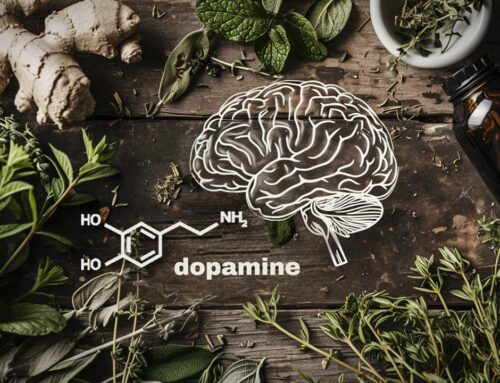Heart health is a paramount concern for millions worldwide. As the leading cause of death globally, cardiovascular diseases (CVDs) claim nearly 17.9 million lives each year, according to the World Health Organization (WHO). With the rise of modern medicine, there are numerous treatments and medications available to combat heart diseases. However, ancient civilizations have long turned to nature for remedies, particularly herbs, to support heart health. This article delves into the world of herbal medicine, focusing on the beneficial herbs that promote heart health. By the end of this comprehensive guide, readers will gain insights into the various herbs that have been scientifically proven to support cardiovascular health, their mechanisms of action, and how to incorporate them into daily life.
Beneficial Herbs for Heart Health
Table of Contents
- Understanding Heart Health
- 5 Herbs for Heart Health
- How to Incorporate Herbs into Your Diet
- 1. Fresh vs. Dried Herbs
- 2. Herbal Teas and Infusions
- 3. Cooking with Herbs
- 4. Herbal Smoothies and Juices
- 5. Baking with Herbs
- 6. Herbal Supplements
- 7. Grow Your Own Herb Garden
- 8. Herb-Infused Waters
- 9. Herbal Garnishes
- 10. Experiment and Explore
- 11. Herbs In Your Diet Precautions
- 12. Herbs In Your Diet Conclusion
- Frequently Asked Questions
- Final Thoughts
- Sources
Understanding Heart Health
The heart, often referred to as the body’s engine room, is a vital organ that ensures the efficient circulation of blood, which carries essential nutrients and oxygen to every part of the body. Understanding heart health is crucial, not just for those with a predisposition to cardiovascular diseases but for everyone aiming for a long, healthy life.
Anatomy and Function of the Heart
The heart is a muscular organ roughly the size of a fist, located slightly left of center in the chest. It consists of four chambers: the left and right atria (upper chambers) and the left and right ventricles (lower chambers). These chambers work in harmony to pump oxygen-rich blood to various parts of the body and return oxygen-depleted blood back to the lungs for reoxygenation.
Factors Affecting Heart Health
Several factors can influence the health of the heart, including:
- Genetics: Family history plays a significant role. If a close family member has had heart diseases, the risk for other family members increases.
- Age: As one grows older, the risk of damaged and narrowed arteries rises, leading to increased heart disease risk.
- Diet: A diet high in saturated fats, trans fats, cholesterol, and sodium can elevate the risk of heart diseases.
- Physical Activity: A sedentary lifestyle can lead to weight gain, increasing the risk of heart disease.
- Smoking: Tobacco use and prolonged exposure to secondhand smoke can damage the heart and blood vessels.
- Alcohol: Excessive alcohol consumption can lead to high blood pressure, heart failure, and even stroke.
The Importance of Monitoring
Regular check-ups and monitoring are essential for early detection of potential heart issues. Blood pressure readings, cholesterol level checks, and other diagnostic tests like ECGs can provide insights into heart health.
The Role of Lifestyle in Heart Health
Lifestyle plays a pivotal role in maintaining heart health. Simple changes like adopting a balanced diet, engaging in regular physical activity, managing stress, avoiding tobacco, and limiting alcohol consumption can have profound effects on heart health.
The Interconnection with Other Diseases
Heart health is not isolated from the rest of the body. Conditions like diabetes, obesity, and chronic kidney disease can increase the risk of heart diseases. Therefore, managing these conditions and understanding their interplay with heart health is essential.
Understanding heart health is a multifaceted endeavor that encompasses knowledge of the heart’s anatomy and function, the factors that affect it, and the lifestyle choices that can support or harm it. With cardiovascular diseases being a leading cause of death worldwide, a deeper understanding and proactive management of heart health are more crucial than ever.
5 Herbs for Heart Health
Nature has always been a reservoir of remedies for various ailments, and heart health is no exception. Several herbs have been traditionally used and are now scientifically recognized for their potential benefits in supporting cardiovascular health. Here’s a deeper dive into 5 of these herbs:
1. Hawthorn: Nature’s Heart Tonic

Hawthorn, scientifically known as Crataegus, is a genus of shrubs and trees native to temperate regions of the Northern Hemisphere. Revered for its medicinal properties, hawthorn has been a cornerstone in traditional medicine systems for centuries. Its leaves, berries, and flowers are particularly esteemed for their potential benefits to heart health.
1.1. Historical Use
Hawthorn’s association with heart health can be traced back to ancient civilizations. The Greeks and Romans used hawthorn for a variety of ailments, while in Traditional Chinese Medicine (TCM), hawthorn berries, known as “Shan Zha,” have been used to aid digestion and improve circulation.
1.2. Active Compounds
Hawthorn is rich in a variety of bioactive compounds, including:
- Flavonoids: These are powerful antioxidants that can neutralize harmful free radicals in the body. They are believed to enhance the strength of blood vessel walls and improve blood flow.
- Oligomeric proanthocyanidins (OPCs): These compounds are known for their antioxidant properties, which can help protect the heart from oxidative stress.
- Triterpenic acids: These have been linked to various health benefits, including anti-inflammatory effects.
1.3. Benefits for Heart Health
Several studies and clinical trials have delved into the heart-related benefits of hawthorn:
- Cardiac Output: Hawthorn can improve the amount of blood pumped out of the heart during each contraction, enhancing overall cardiac efficiency.
- Vasodilation: The herb has the potential to widen blood vessels, which can lower blood pressure and improve blood flow to the heart muscles.
- Arrhythmia: Hawthorn may help regulate heartbeat, reducing instances of irregular heart rhythms.
- Heart Failure: Some studies suggest that hawthorn extract, when used alongside conventional treatments, can alleviate symptoms of heart failure, such as fatigue and shortness of breath.
1.4. How to Use Hawthorn
Hawthorn can be consumed in various forms:
- Tea: Hawthorn leaves or berries can be steeped in hot water to make a therapeutic tea.
- Tinctures: These are liquid extracts of hawthorn that can be taken directly or added to water.
- Capsules: Standardized extracts are available in capsule form, offering a convenient way to consume hawthorn.
1.5. Precautions
While hawthorn is generally considered safe for most people, it’s essential to approach its use with caution:
- Interactions: Hawthorn can interact with certain medications, especially those used for heart diseases. It’s crucial to consult with a healthcare professional before combining hawthorn with other treatments.
- Side Effects: Some individuals might experience mild side effects, such as nausea, dizziness, or stomach upset.
1.6. Wrapping Up With Hawthorn
Hawthorn stands as a testament to the power of nature in supporting heart health. Its rich history and the growing body of scientific evidence highlight its potential as a natural remedy for various heart conditions. However, as with all herbal treatments, it’s essential to use hawthorn judiciously and in consultation with healthcare professionals.
2. Garlic: The Heart’s Natural Ally

Garlic, known scientifically as Allium sativum, is more than just a flavorful culinary ingredient. This pungent bulb has been celebrated for its medicinal properties for thousands of years across various cultures. From ancient Egyptian healers to Chinese herbalists, garlic’s reputation as a health enhancer is well-documented. Among its myriad benefits, garlic’s potential positive effects on heart health stand out prominently.
2.1. Historical Context
Garlic’s medicinal use dates back over 5,000 years. Ancient civilizations, including the Greeks, Romans, and Egyptians, utilized garlic for its therapeutic properties. It was believed to provide strength, increase stamina, and even ward off evil spirits. In more recent history, during World War I and II, garlic was used as an antiseptic to prevent gangrene in wounded soldiers.
2.2. Active Compounds
Garlic owes its health benefits to a cocktail of bioactive compounds. The most notable among these include:
- Allicin: When garlic is crushed or chopped, an enzyme called alliinase converts alliin, a compound found in garlic, into allicin. Allicin is responsible for garlic’s distinct aroma and many of its health benefits.
- Ajoene: This compound has been shown to have anti-clotting properties, which can help prevent blood clots.
- Sulfur Compounds: These play a significant role in garlic’s cardiovascular benefits, including diallyl trisulfide and s-allyl cysteine.
2.3. Cardiovascular Benefits
Garlic’s influence on heart health is multifaceted:
- Blood Pressure Reduction: Several studies have shown that garlic can help lower blood pressure, especially in individuals with hypertension. Allicin, in particular, promotes the relaxation and dilation of blood vessels, facilitating smoother blood flow.
- Cholesterol Management: Regular garlic consumption has been linked to reduced levels of LDL (bad) cholesterol and total cholesterol, while not affecting HDL (good) cholesterol.
- Anti-clotting Properties: Ajoene in garlic helps prevent the formation of blood clots, reducing the risk of strokes and heart attacks.
- Antioxidant Properties: Garlic’s antioxidant compounds combat oxidative stress, a significant factor in heart disease progression.
2.4. Consumption and Forms
Garlic can be incorporated into one’s diet in various ways:
- Raw: Consuming raw garlic, especially on an empty stomach, can offer the most direct health benefits. However, its strong flavor might be overpowering for some.
- Cooked: While cooking garlic might reduce some of its allicin content, it still retains many of its beneficial properties.
- Supplements: For those who find the taste of garlic too strong, garlic supplements, including pills and extracts, are available. These often come in odorless varieties.
2.5. Precautions
While garlic is generally safe for consumption, there are a few considerations:
- Medication Interaction: Garlic can enhance the effects of medications that reduce blood clotting, such as warfarin. It’s essential to consult a doctor if you’re on such medications.
- Digestive Issues: In some individuals, excessive garlic consumption can lead to digestive discomfort, including heartburn or stomach upset.
2.6. Wrapping Up With Garlic
Garlic, with its rich history and potent bioactive compounds, offers a natural avenue to support heart health. Whether consumed raw, cooked, or in supplement form, its cardiovascular benefits are undeniable. However, as with all natural remedies, it’s crucial to use garlic judiciously and in consultation with healthcare experts.
3. Arjuna: The Ayurvedic Heart Healer

Arjuna, scientifically known as Terminalia arjuna, is a tall, evergreen tree native to the Indian subcontinent. Its bark, with its distinctive white to pinkish hue, has been a cornerstone in Ayurvedic medicine for centuries. Revered for its therapeutic properties, Arjuna is often referred to as a “guardian of the heart” in traditional texts, underscoring its significance in cardiovascular health.
3.1. Historical Significance
The use of Arjuna in Ayurveda, the ancient Indian system of medicine, can be traced back over a thousand years. Ancient sages and healers recognized its potential in treating a variety of ailments, with a particular emphasis on heart-related conditions. Its name, “Arjuna,” is derived from the legendary Indian hero of the Mahabharata, symbolizing strength and valor—qualities that the herb is believed to impart to the heart.
3.2. Active Compounds
Arjuna’s bark is a treasure trove of bioactive compounds, which contribute to its medicinal properties:
- Tannins and Flavonoids: These compounds have strong antioxidant properties, which help combat oxidative stress, a significant contributor to heart disease.
- Arjunolic Acid: A unique triterpenoid saponin found in Arjuna, it has potent anti-inflammatory and antioxidant effects.
- Coenzyme Q10: This naturally occurring compound plays a crucial role in energy production within heart cells and acts as an antioxidant.
3.3. Cardiovascular Benefits
Arjuna’s influence on heart health is both profound and multifaceted:
- Cardiac Muscle Strength: Arjuna is believed to strengthen the cardiac muscle, ensuring efficient heart contractions and improved pumping of blood.
- Blood Pressure Regulation: The herb has been shown to help regulate blood pressure, making it beneficial for those with hypertension.
- Cholesterol Management: Arjuna can aid in reducing LDL (bad) cholesterol levels while boosting HDL (good) cholesterol, promoting overall heart health.
- Antioxidant Properties: The antioxidants in Arjuna help neutralize harmful free radicals, reducing oxidative stress and preventing damage to heart tissues.
- Anti-inflammatory Effects: Chronic inflammation is a risk factor for heart diseases, and Arjuna’s anti-inflammatory properties can help mitigate this risk.
3.4. Consumption and Forms
Arjuna can be incorporated into one’s wellness regimen in various ways:
- Decoction: The traditional method involves boiling Arjuna bark in water to prepare a decoction, which is then consumed.
- Powder: The dried and powdered bark can be mixed with water or honey and taken daily.
- Supplements: For those seeking convenience, Arjuna is available in capsule and tablet forms, often standardized to ensure consistent dosing.
3.5. Precautions
While Arjuna is generally considered safe, there are some considerations to keep in mind:
- Medication Interaction: Arjuna might interact with certain heart medications, especially those related to blood pressure and heart rhythm. It’s essential to consult a healthcare professional if you’re on such medications.
- Pregnancy and Lactation: The safety of Arjuna during pregnancy and lactation has not been extensively studied. It’s advisable for pregnant or breastfeeding women to consult with a healthcare provider before consumption.
3.6. Wrapping Up With Arjuna
Arjuna, with its deep roots in Ayurvedic tradition and a growing body of scientific evidence, stands as a testament to nature’s ability to nurture and heal. Its myriad benefits for heart health make it a valuable ally in the quest for cardiovascular well-being. However, as with all natural remedies, it’s essential to approach its use with knowledge and caution, ideally under the guidance of healthcare experts.
4. Ginger: A Spicy Boon for the Heart

Ginger, known scientifically as Zingiber officinale, is a rhizome that has been a staple in culinary and medicinal practices across various cultures for millennia. Its spicy, aromatic flavor enhances countless dishes, while its therapeutic properties address a range of ailments. Among ginger’s many health benefits, its potential positive impact on heart health is particularly noteworthy.
4.1. Historical Context
Originating in Southeast Asia, ginger’s medicinal use dates back over 5,000 years. Ancient Chinese and Indian texts laud ginger for its therapeutic properties, from aiding digestion to alleviating nausea. Its spread along trade routes brought it to the Roman Empire, where it became a sought-after commodity. Over time, ginger’s reputation as a health enhancer solidified, with heart health emerging as one of its primary areas of influence.
4.2. Active Compounds
Ginger’s health benefits can be attributed to a rich array of bioactive compounds:
- Gingerol: The primary bioactive compound in ginger, gingerol is responsible for much of its medicinal properties. It has powerful anti-inflammatory and antioxidant effects.
- Shogaol: Found in dried ginger, shogaol has similar properties to gingerol but is more potent.
- Zingerone: This compound emerges when ginger is cooked and has antioxidant properties.
4.3. Cardiovascular Benefits
Ginger’s influence on heart health is diverse and significant:
- Cholesterol Reduction: Regular ginger consumption can lead to reductions in LDL (bad) cholesterol and total cholesterol levels, both of which are risk factors for heart disease.
- Blood Sugar Regulation: Ginger can help lower blood sugar levels, reducing the risk of heart-related complications in diabetics.
- Anti-inflammatory Properties: Chronic inflammation is linked to heart disease. Ginger’s anti-inflammatory compounds can help mitigate this risk.
- Antioxidant Properties: By neutralizing harmful free radicals, ginger’s antioxidants protect the heart and blood vessels from oxidative stress.
- Blood Clot Prevention: Ginger can inhibit the formation of blood clots, reducing the risk of strokes and heart attacks.
4.4. Consumption and Forms
Ginger’s versatility allows for its easy incorporation into daily routines:
- Fresh: Fresh ginger can be grated or sliced and added to dishes, brewed as tea, or consumed raw.
- Dried and Powdered: Ginger powder can be used as a spice in cooking or taken as a supplement.
- Tinctures and Extracts: Liquid extracts of ginger can be taken directly or added to drinks.
- Capsules: For standardized dosing, ginger supplements in capsule form are available.
4.5. Precautions
While ginger is generally safe for most people, certain considerations should be kept in mind:
- Medication Interaction: Ginger can enhance the effects of blood-thinning medications, such as warfarin. It’s essential to consult a healthcare professional if you’re on such medications.
- Gastrointestinal Discomfort: In some individuals, excessive ginger consumption can lead to digestive issues like heartburn or stomach upset.
- Pregnancy: While ginger can help alleviate morning sickness, it’s advisable for pregnant women to consult with a healthcare provider regarding appropriate dosages.
4.6. Wrapping Up With Ginger
Ginger, with its rich history and potent bioactive compounds, offers a natural and holistic approach to heart health. Its myriad cardiovascular benefits, from reducing cholesterol to preventing blood clots, make it a valuable addition to heart-healthy regimens. As with all natural remedies, it’s crucial to use ginger judiciously and, when in doubt, seek guidance from healthcare experts.
5. Green Tea: A Brew for Heart Wellness

Green tea, derived from the leaves of the Camellia sinensis plant, is a beverage that has captivated cultures worldwide for its refreshing taste and myriad health benefits. While it shares its origins with black and oolong teas, green tea is unique in its processing, which preserves the vibrant color and rich antioxidant content of the leaves. Among its many health-promoting properties, green tea’s influence on heart health is particularly compelling.
5.1. Historical Roots
Originating in ancient China, green tea’s history spans thousands of years. Chinese legend speaks of Emperor Shen Nong, who, in 2737 BCE, serendipitously discovered tea when leaves from a wild tree blew into his pot of boiling water. Since then, green tea has woven itself into the fabric of Asian cultures, both as a daily beverage and a medicinal remedy. Its introduction to the West brought with it a surge of scientific interest, revealing its potential for heart health.
5.2. Active Compounds
Green tea’s health benefits are attributed to its rich array of bioactive compounds:
- Catechins: These are a type of polyphenol and are the primary active compounds in green tea. Epigallocatechin gallate (EGCG) is the most abundant and studied catechin, known for its potent antioxidant properties.
- Flavonoids: These compounds have antioxidant effects that protect cells from damage.
- Theanine: An amino acid unique to tea, theanine has been shown to have calming effects on the brain.
- Caffeine: Present in moderate amounts, caffeine can enhance alertness and mood.
5.3. Cardiovascular Benefits
Green tea’s influence on heart health is multifaceted:
- Cholesterol Management: Regular consumption of green tea has been linked to reduced levels of LDL (bad) cholesterol and total cholesterol, while often increasing HDL (good) cholesterol.
- Blood Pressure Regulation: Green tea can help lower blood pressure, reducing the risk of hypertension and subsequent heart-related complications.
- Antioxidant Protection: The catechins in green tea neutralize harmful free radicals, protecting the heart and blood vessels from oxidative stress.
- Improved Blood Flow: Green tea can enhance the ability of blood vessels to relax and dilate, promoting better blood flow.
- Reduced Inflammation: Chronic inflammation is a risk factor for heart disease, and the anti-inflammatory properties of green tea can help counteract this.
5.4. Consumption and Forms
Green tea can be enjoyed in various ways:
- Brewed: The traditional method involves steeping green tea leaves in hot water. The brewing time and temperature can influence the flavor and antioxidant content.
- Powdered (Matcha): Matcha is a powdered form of green tea, often used in Japanese tea ceremonies. It can be whisked into water or milk or incorporated into recipes.
- Supplements: For those seeking the benefits without the beverage, green tea extracts are available in capsule form.
- Iced: Green tea can also be enjoyed as a cold beverage, especially refreshing in warmer climates.
5.5. Precautions
While green tea is generally safe for most people, there are some considerations:
- Caffeine Sensitivity: Some individuals may be sensitive to caffeine, leading to restlessness, insomnia, or palpitations. It’s advisable to monitor one’s caffeine intake and choose decaffeinated varieties if needed.
- Iron Absorption: Green tea can inhibit the absorption of non-heme iron from plant sources. Those with iron deficiencies should consume green tea separate from meals.
- Medication Interaction: Green tea can interact with certain medications, including blood thinners and blood pressure drugs. Always consult with a healthcare professional before combining green tea with medications.
5.6. Wrapping Up With Green Tea
Green tea, with its ancient roots and modern scientific backing, stands as a testament to nature’s ability to nurture and heal. Its cardiovascular benefits, from antioxidant protection to improved blood flow, make it a valuable ally in the quest for heart health. As with all natural remedies, it’s essential to approach its consumption with knowledge and mindfulness, ensuring it complements one’s overall wellness journey.
How to Incorporate Herbs into Your Diet: A Guide to Herbal Wellness
Herbs have been an integral part of culinary and medicinal traditions for millennia. Beyond their aromatic and flavor-enhancing properties, many herbs offer a plethora of health benefits. Incorporating them into your diet can be both a delightful culinary adventure and a step towards holistic well-being. Here’s a comprehensive guide on seamlessly weaving herbs into your daily meals and routines.
1. Fresh vs. Dried Herbs
- Fresh Herbs: These are best used in dishes where their delicate flavors can shine, such as salads, garnishes, or dishes with short cooking times. Store them in the refrigerator, wrapped in a damp paper towel inside a plastic bag.
- Dried Herbs: More concentrated in flavor, dried herbs are suitable for dishes with longer cooking times, like stews or roasts. Store them in a cool, dark place to preserve their potency.
2. Herbal Teas and Infusions
- Teas: Many herbs can be steeped in hot water to make therapeutic teas. Examples include chamomile, peppermint, and hibiscus. Simply add the herbs to boiling water, let steep for 5-10 minutes, strain, and enjoy.
- Cold Infusions: Some herbs release their benefits better in cold water. Place herbs in cold water and let them infuse overnight in the refrigerator.
3. Cooking with Herbs
- Sauces and Dressings: Incorporate finely chopped herbs into sauces, dressings, or marinades. Basil in tomato sauce or dill in a yogurt dressing can elevate the flavor profile.
- Herb-Infused Oils: Warm olive or coconut oil and infuse with herbs like rosemary, thyme, or garlic. Strain and use the flavored oil for cooking or as a drizzle.
4. Herbal Smoothies and Juices
- Blend fresh herbs like mint, parsley, or cilantro into your morning smoothie or juice for a refreshing twist and added health benefits.
5. Baking with Herbs
- Infuse baked goods with herbal flavors. Think rosemary bread, lavender cookies, or basil muffins.
6. Herbal Supplements
- For those who prefer a more concentrated dose or find it challenging to incorporate certain herbs into meals, herbal supplements are available in various forms, including capsules, tinctures, and powders.
7. Grow Your Own Herb Garden
- Cultivate a small herb garden in your backyard or even on a windowsill. This ensures a fresh supply of your favorite herbs and encourages regular use.
8. Herb-Infused Waters
- Add slices of cucumber, sprigs of mint, or a dash of rosemary to your water bottle for a refreshing and flavorful hydration boost.
9. Herbal Garnishes
- Elevate the presentation and nutrition of your dishes by using herbs as garnishes. A sprig of parsley, basil, or chervil can add a burst of color and flavor.
10. Experiment and Explore
- The world of herbs is vast and diverse. Don’t hesitate to experiment with different herbs, explore various cuisines, and discover new flavor combinations.
11. Herbs In Your Diet Precautions
While herbs offer numerous health benefits, it’s essential to approach their consumption with knowledge:
- Allergies: Always test a small amount of a new herb to check for any allergic reactions.
- Medicinal Interactions: Some herbs can interact with medications. If you’re on medication or have underlying health conditions, consult with a healthcare professional before making significant changes to your herbal intake.
12. Herbs In Your Diet Conclusion
Incorporating herbs into your diet is a journey of flavor, tradition, and wellness. By embracing the aromatic world of herbs, you not only enhance your culinary experiences but also imbue your meals with health-promoting properties. Whether you’re sipping on a soothing herbal tea or savoring a rosemary-infused roast, the benefits of herbs are manifold and waiting to be explored.
Frequently Asked Questions
Final Thoughts
Heart health is undeniably crucial for overall well-being. While modern medicine offers various treatments, turning to nature and leveraging the power of beneficial herbs can provide a holistic approach to maintaining a healthy heart. Of all the herbs discussed, garlic stands out for its multifaceted benefits, from reducing blood pressure to preventing blood clotting. Embracing a heart-healthy lifestyle, complemented by these potent herbs, can pave the way for a healthier, longer life.
Sources
- World Health Organization – Cardiovascular diseases (CVDs)
- Pittler, M. H., & Ernst, E. (2003). Hawthorn extract for treating chronic heart failure. Cochrane Database of Systematic Reviews.
- Ried, K., Frank, O. R., & Stocks, N. P. (2013). Garlic lowers blood pressure in hypertensive individuals. The Journal of Nutrition, 143, 240-245.
- Maulik, S. K., & Kumar, S. (2012). Oxidative stress and cardiac hypertrophy: a review. Toxicology Mechanisms and Methods, 22, 359-366.
- Bode, A. M., & Dong, Z. (2011). The amazing and mighty ginger. Herbal Medicine: Biomolecular and Clinical Aspects, 2nd edition.
- Suzuki, Y., Miyoshi, N., & Isemura, M. (2012). Health-promoting effects of green tea. Proceedings of the Japan Academy, Series B, 88, 88-101.







Leave A Comment